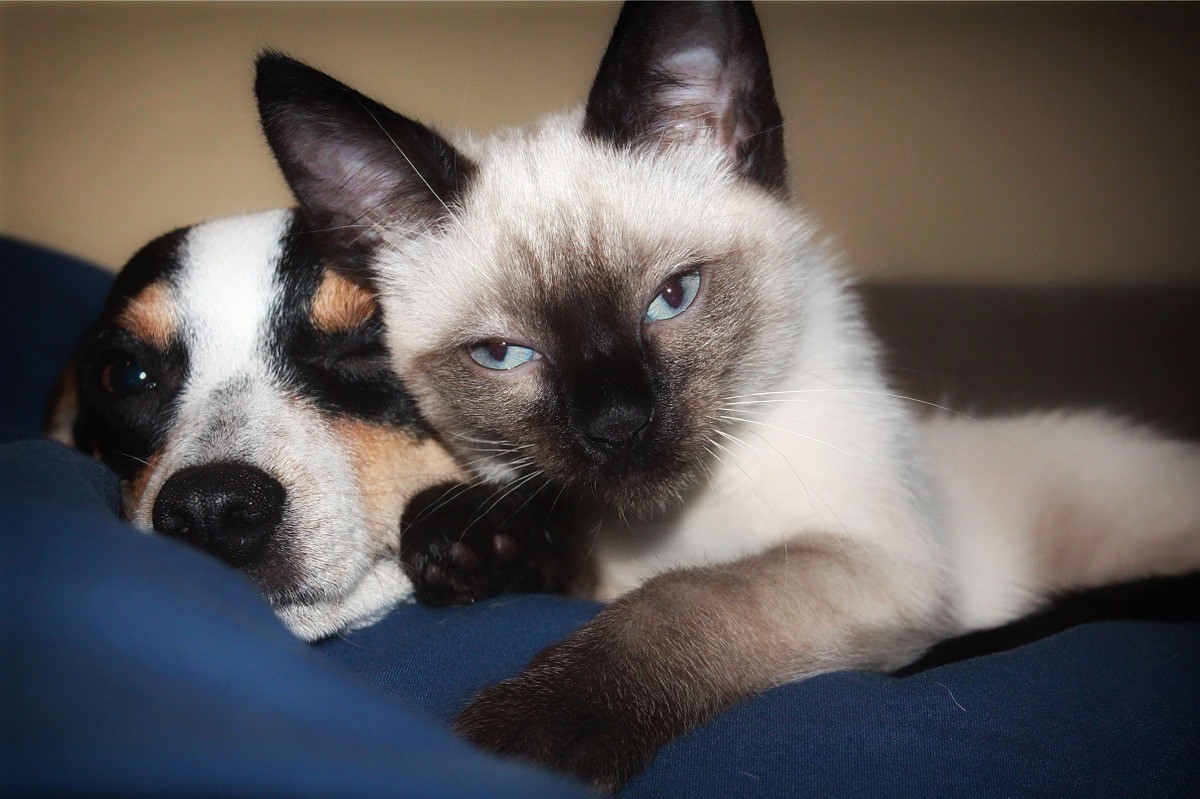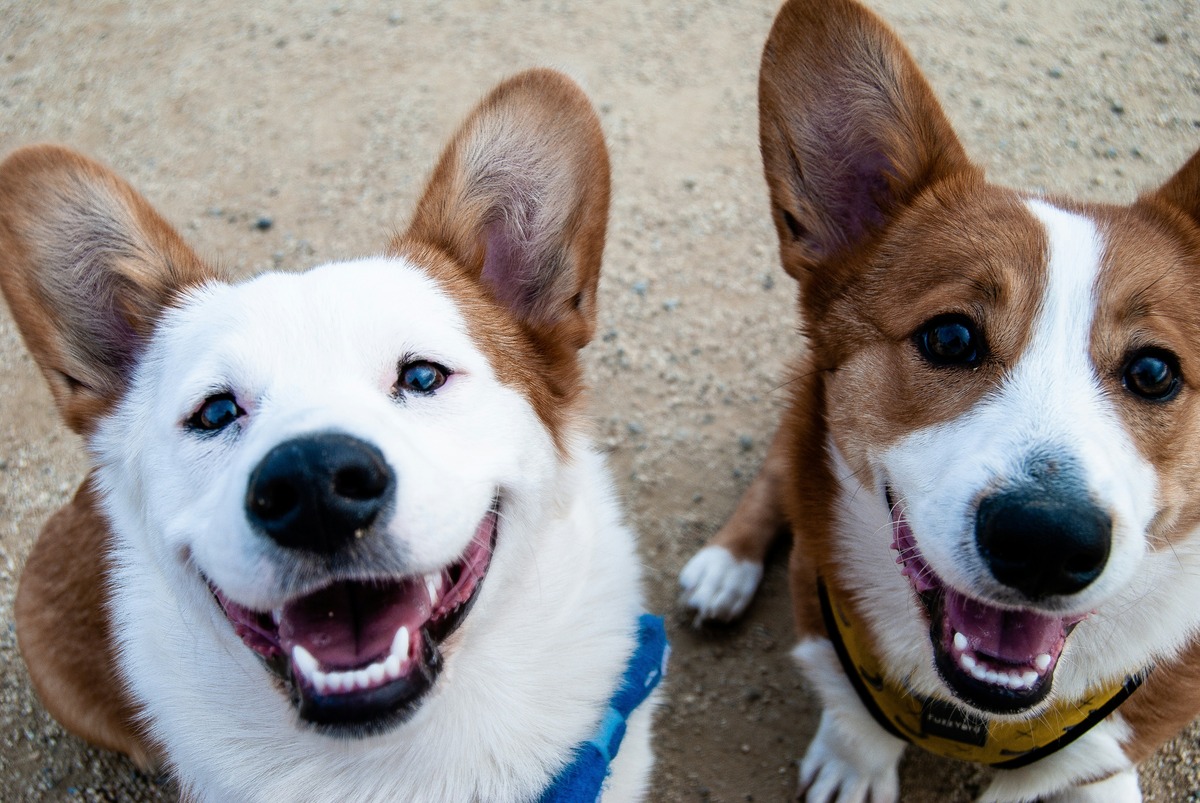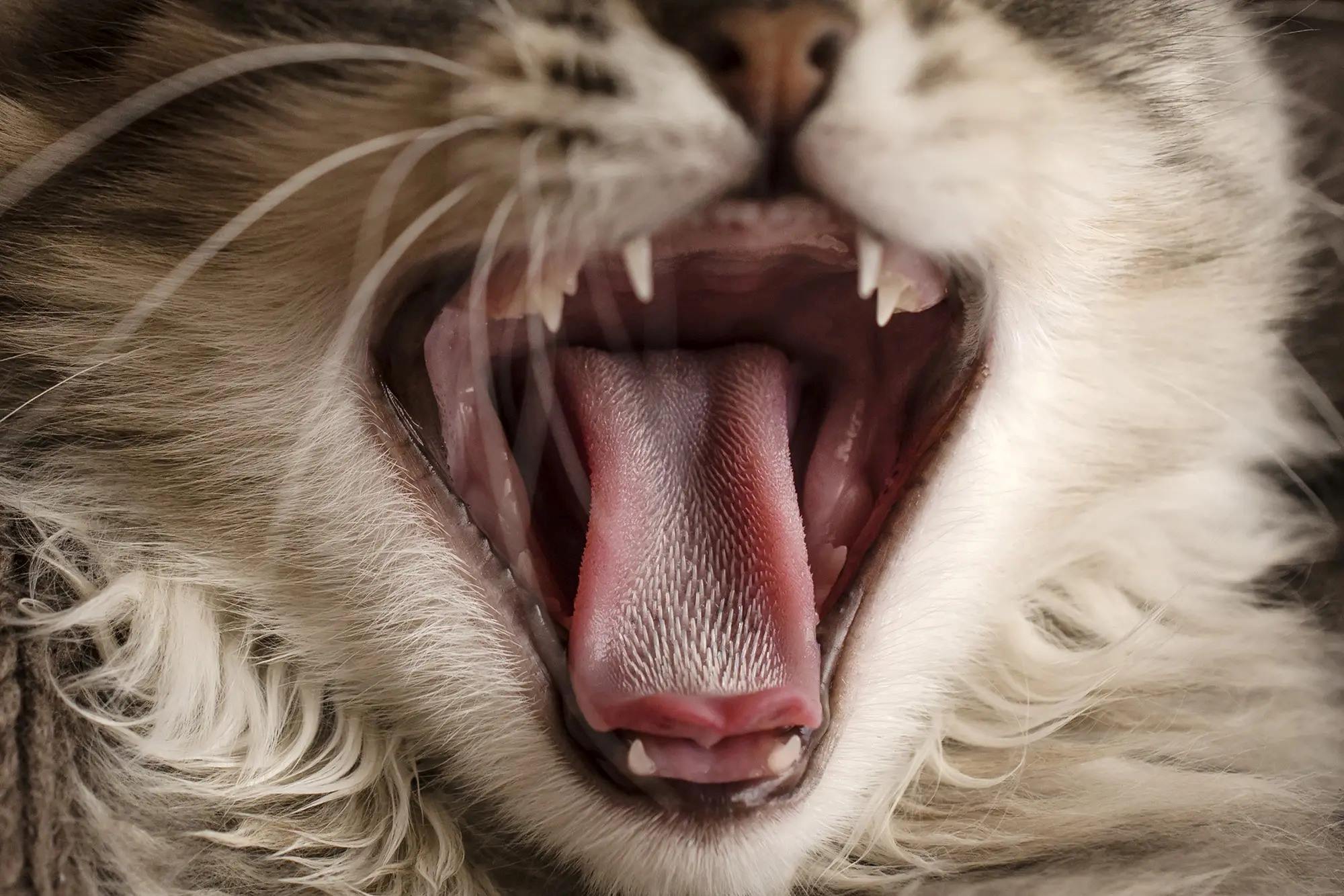Home>Science>The Surprising Reason Why Dogs Can’t Resist Nibbling Blankets And Pillows


Science
The Surprising Reason Why Dogs Can’t Resist Nibbling Blankets And Pillows
Published: February 8, 2024
Discover the science behind why dogs are drawn to nibbling on blankets and pillows. Uncover the surprising reason behind this common behavior.
(Many of the links in this article redirect to a specific reviewed product. Your purchase of these products through affiliate links helps to generate commission for Noodls.com, at no extra cost. Learn more)
Table of Contents
Introduction
Dogs are known for their endearing and often quirky behaviors. One such behavior that can leave pet owners both puzzled and amused is the tendency of dogs to nibble on blankets and pillows. This seemingly innocent act can sometimes result in torn fabric and frayed edges, prompting many to wonder about the underlying reasons for this behavior.
Understanding the motivations behind a dog's inclination to nibble on blankets and pillows requires a closer look at their instinctual behaviors, as well as the psychological and sensory factors that drive them to engage in such activities. By delving into the complex interplay of canine instincts and sensory experiences, we can gain valuable insights into the fascinating world of our beloved canine companions.
In the following sections, we will explore the instinctual behavior of dogs, the comfort and security that blankets and pillows provide, the need for oral stimulation, and the role of scent in canine behavior. Through this exploration, we aim to shed light on the surprising reasons why dogs exhibit this behavior, offering a deeper understanding of our furry friends' unique perspectives and experiences.
The Instinctual Behavior of Dogs
Dogs, as descendants of wolves, retain many instinctual behaviors that are deeply ingrained in their genetic makeup. One such behavior is the act of kneading or nibbling, which can be traced back to their wild ancestry. In the wild, wolves and wild dogs engage in similar behaviors to create a comfortable resting spot or a secure nesting area for themselves and their young. This behavior involves pawing at the ground or soft materials, such as leaves or grass, to create a cozy and safe space.
When dogs exhibit the behavior of nibbling on blankets and pillows, they are essentially tapping into this primal instinct. The act of kneading and nibbling allows them to manipulate their environment, much like their wild counterparts, to create a comfortable and secure space for themselves. This behavior is often observed when dogs are preparing to rest or settle down for a nap, as they instinctively seek to create a sense of comfort and security in their immediate surroundings.
Furthermore, the instinctual behavior of kneading and nibbling is also linked to a dog's need to mark their territory. In the wild, wolves and wild dogs use scent marking as a way to establish ownership of a particular area and communicate with other members of their pack. By kneading and nibbling on blankets and pillows, dogs may be engaging in a similar form of scent marking, albeit in a domestic setting. This behavior allows them to deposit their scent onto the fabric, effectively marking it as their own and creating a familiar and comforting environment within their living space.
Moreover, the act of kneading and nibbling can also serve as a self-soothing mechanism for dogs. This behavior is often observed in puppies during the nursing stage, as they knead and nibble at their mother's fur to stimulate milk flow and experience a sense of comfort and security. As dogs transition into adulthood, this instinctual behavior may persist as a means of self-soothing and relaxation, especially during times of stress or anxiety.
In summary, the instinctual behavior of dogs, including their tendency to knead and nibble on blankets and pillows, is deeply rooted in their genetic heritage. By understanding the evolutionary origins of this behavior, we can gain valuable insights into the complex and fascinating world of canine instincts and behaviors.
The Comfort and Security of Blankets and Pillows
Blankets and pillows hold a special allure for dogs, offering a wealth of comfort and security that resonates deeply with their primal instincts and sensory needs. When a dog curls up on a soft blanket or snuggles against a fluffy pillow, they are indulging in a sensory experience that transcends mere physical comfort.
For dogs, blankets and pillows represent more than just cozy resting spots; they serve as tangible sources of comfort and security, fostering a sense of familiarity and warmth within their living environment. The soft texture of blankets and pillows provides a soothing tactile experience for dogs, offering a gentle and comforting sensation against their fur and skin. This tactile stimulation can be particularly calming for dogs, especially during periods of rest or relaxation.
Moreover, the act of kneading and nibbling on blankets and pillows allows dogs to engage in a form of self-soothing and stress relief. Much like humans who find solace in the act of hugging a soft pillow or snuggling under a cozy blanket, dogs seek similar comfort through tactile interactions with these familiar items. The rhythmic motion of kneading and nibbling can have a calming effect on dogs, helping them alleviate anxiety and find emotional reassurance in the comforting embrace of their favorite blankets and pillows.
Additionally, blankets and pillows carry the scent of their owners, creating a strong sense of connection and security for dogs. The familiar scent of their human companions imparts a feeling of safety and belonging, reinforcing the bond between dogs and their owners. This olfactory connection can be especially comforting for dogs when their owners are away, providing a reassuring presence in the form of familiar scents that linger on the fabric of blankets and pillows.
Furthermore, blankets and pillows serve as symbolic markers of a dog's territory within the home. By kneading and nibbling on these items, dogs are instinctively establishing a sense of ownership and familiarity within their living space, creating a personal sanctuary imbued with their scent and presence.
In essence, the comfort and security that dogs derive from blankets and pillows extend beyond physical attributes; these items evoke a multisensory experience that encompasses tactile, olfactory, and emotional dimensions. By recognizing the profound significance of blankets and pillows in a dog's world, we gain a deeper appreciation for the intricate ways in which our canine companions seek comfort, security, and a sense of belonging within their domestic environment.
The Need for Oral Stimulation
The need for oral stimulation plays a pivotal role in understanding why dogs exhibit a penchant for nibbling on blankets and pillows. For dogs, engaging in oral behaviors, such as nibbling and chewing, is a natural and instinctual inclination that serves various physiological and psychological purposes.
From a physiological standpoint, the act of nibbling provides dogs with oral stimulation, which can be inherently satisfying and soothing. Similar to how humans may find comfort in chewing gum or biting on a pen, dogs seek oral stimulation as a means of alleviating boredom, stress, or the discomfort associated with teething. This oral fixation can be particularly pronounced during the puppy stage, as young dogs explore the world around them and alleviate teething discomfort through gentle nibbling and chewing.
Furthermore, oral stimulation serves as a form of sensory enrichment for dogs, allowing them to engage their senses and fulfill their natural inclination to explore and interact with their environment. The tactile experience of nibbling on blankets and pillows provides dogs with a means of sensory engagement, offering a textural and tactile experience that stimulates their senses and provides a source of mental and physical enrichment.
In addition to the physiological aspects, the need for oral stimulation also ties into the psychological well-being of dogs. The act of nibbling on blankets and pillows can serve as a self-soothing mechanism, helping dogs cope with anxiety, insecurity, or periods of emotional distress. Much like how humans may engage in comforting behaviors during times of stress, dogs turn to oral stimulation as a way to find solace and emotional reassurance in their immediate surroundings.
Moreover, the act of nibbling can also be a manifestation of playful behavior and curiosity, as dogs explore and interact with their environment through gentle oral interactions. This playful aspect of oral stimulation reflects a dog's innate sense of curiosity and the desire to engage in enriching and stimulating activities, further underscoring the multifaceted nature of this behavior.
In essence, the need for oral stimulation encompasses a complex interplay of physiological and psychological factors, highlighting the diverse ways in which dogs seek sensory enrichment, emotional comfort, and playful engagement through gentle nibbling and oral exploration. By recognizing the significance of oral stimulation in a dog's behavioral repertoire, we gain a deeper understanding of the nuanced ways in which dogs interact with their environment and fulfill their innate sensory and emotional needs.
The Role of Scent in Canine Behavior
The role of scent in canine behavior is a fundamental aspect that shapes the way dogs perceive and interact with the world around them. Dogs possess a highly developed sense of smell, far surpassing that of humans, and this olfactory prowess plays a pivotal role in guiding their behaviors, communication, and emotional experiences.
From a biological standpoint, dogs rely on their sense of smell to gather information about their environment, identify familiar and unfamiliar scents, and navigate their surroundings. This heightened olfactory sensitivity allows dogs to detect a myriad of scents with remarkable precision, enabling them to discern subtle nuances and distinctions that elude human perception. As such, the olfactory landscape forms an integral part of a dog's sensory world, shaping their perceptions and responses to various stimuli.
In the context of blankets and pillows, the role of scent becomes particularly significant. Dogs are known to possess a keen sensitivity to scent, and they use this olfactory acumen to establish familiarity, comfort, and security within their living environment. Blankets and pillows, imbued with the scent of their owners, carry a deeply reassuring and comforting aroma for dogs. The familiar scent of their human companions serves as a powerful source of emotional connection and reassurance, providing dogs with a tangible link to their beloved owners, even in their absence.
Moreover, the act of kneading and nibbling on blankets and pillows allows dogs to deposit their own scent onto these items, effectively marking them as familiar and comforting possessions within their living space. By infusing these items with their own scent, dogs create a personalized and secure environment that reflects their presence and ownership, reinforcing their sense of belonging and security.
Additionally, the role of scent extends to communication and social interaction among dogs. Scent marking, through behaviors such as kneading and nibbling, enables dogs to convey information about their presence, territory, and emotional state to other dogs. This form of olfactory communication serves as a means of establishing boundaries, conveying social cues, and fostering a sense of belonging within their canine community.
In essence, the role of scent in canine behavior encompasses a rich tapestry of sensory experiences, emotional connections, and social interactions. By recognizing the profound influence of scent on a dog's perception of their environment and their emotional well-being, we gain valuable insights into the intricate ways in which dogs navigate the world through their remarkable olfactory abilities.
Conclusion
In conclusion, the seemingly innocuous behavior of dogs nibbling on blankets and pillows is rooted in a complex interplay of instinctual behaviors, sensory experiences, and emotional needs. From their primal instincts inherited from their wild ancestors to their innate desire for comfort and security, dogs find solace and reassurance in the tactile, olfactory, and emotional dimensions of their beloved blankets and pillows. The act of kneading and nibbling serves as a multifaceted expression of their natural inclinations, providing them with a means of self-soothing, territorial marking, and sensory enrichment.
Furthermore, the need for oral stimulation emerges as a significant factor in understanding this behavior, encompassing both physiological and psychological dimensions. Dogs seek oral stimulation as a way to alleviate stress, find comfort, and engage with their environment, reflecting their innate curiosity and emotional resilience. The role of scent in canine behavior adds another layer of complexity, as dogs rely on their remarkable olfactory abilities to establish familiarity, communicate with their canine counterparts, and forge a deep emotional connection with their human companions through the comforting scents imbued within their cherished blankets and pillows.
By delving into the surprising reasons behind this behavior, we gain a deeper appreciation for the intricate ways in which dogs navigate their world, seek comfort, and establish a sense of belonging within their domestic environment. The act of nibbling on blankets and pillows transcends mere habit; it encapsulates a rich tapestry of instinctual drives, sensory experiences, and emotional connections that underscore the unique and endearing nature of our canine companions.
Through this exploration, we are reminded of the profound bond that exists between humans and dogs, as we gain a deeper understanding of their nuanced behaviors and emotional needs. By recognizing and honoring the multifaceted motivations behind their actions, we can further nurture the well-being and happiness of our beloved furry friends, creating an environment that honors their instincts, enriches their sensory experiences, and fosters a deep sense of comfort and security within their cherished living spaces.














